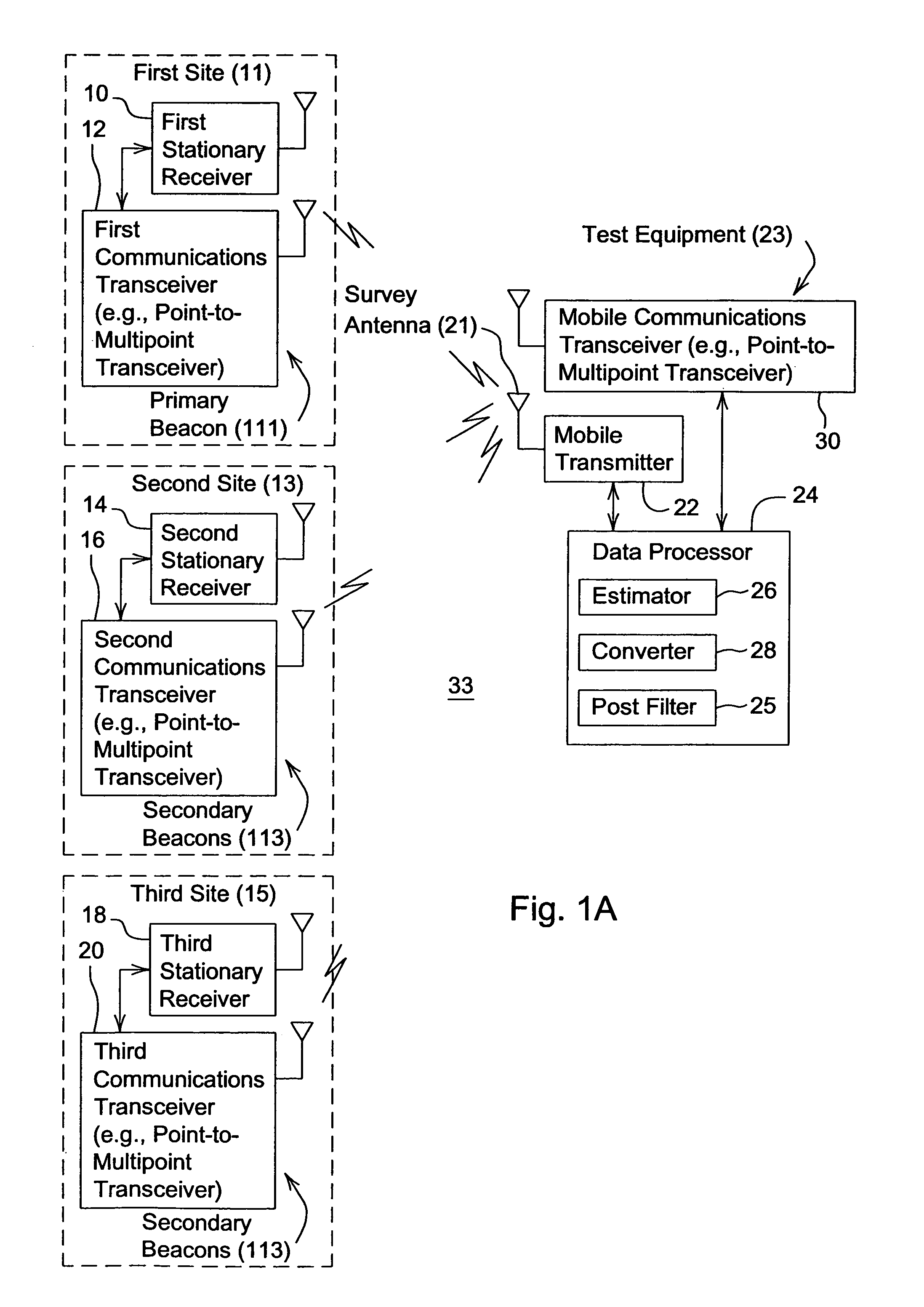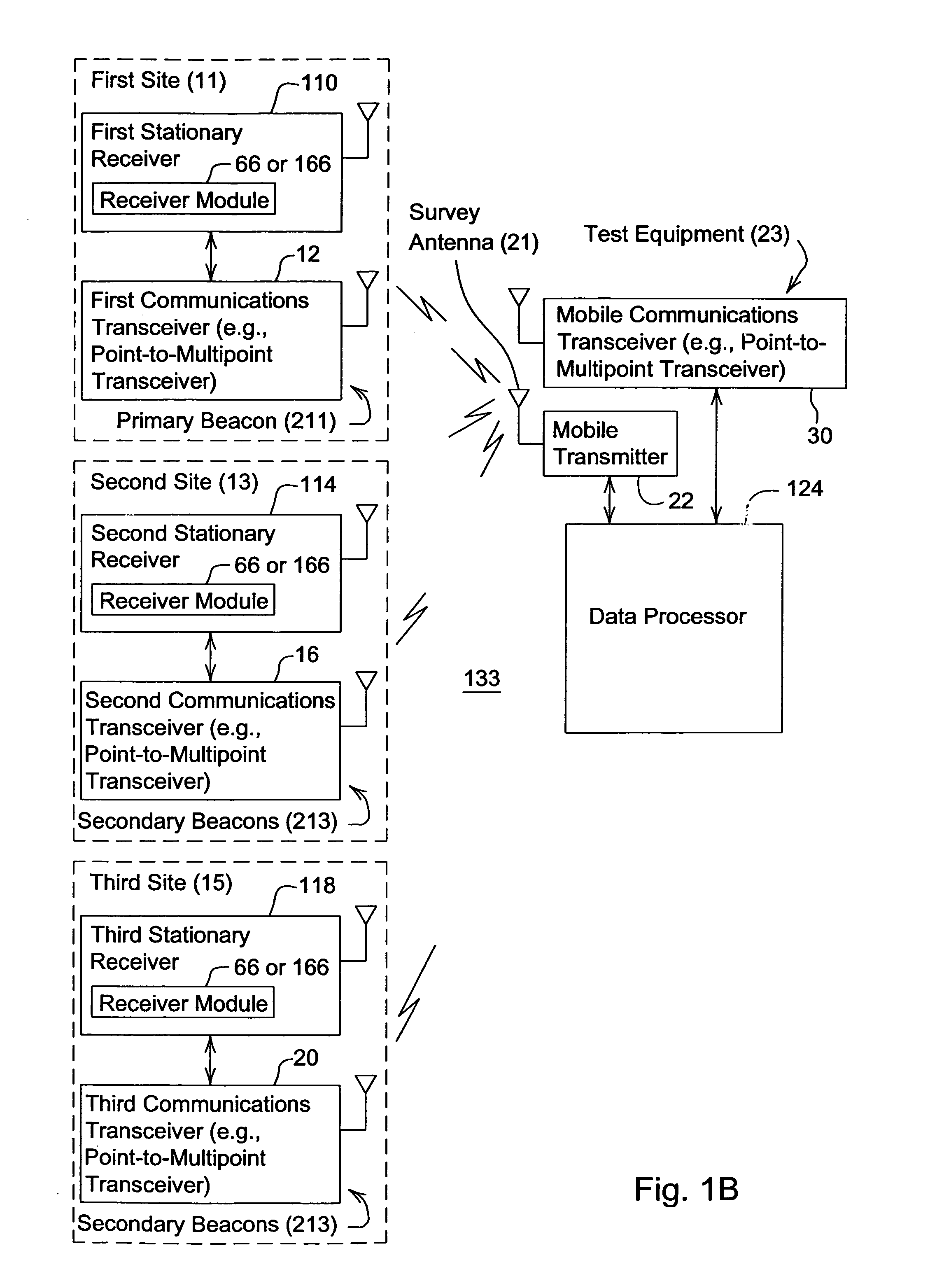Method for configuring a local positioning system
a local positioning system and local positioning technology, applied in direction finders, direction finders using radio waves, instruments, etc., can solve the problems of inaccurate estimation of the location of an object or a vehicle in a work area, and the local positioning system may not provide accurate measurements of the location of an object or a vehicle, so as to reduce multi-path errors
- Summary
- Abstract
- Description
- Claims
- Application Information
AI Technical Summary
Benefits of technology
Problems solved by technology
Method used
Image
Examples
Embodiment Construction
[0024]FIG. 1A illustrates a first embodiment of the local positioning system 33 in a configuration stage. The configuration stage refers to a stage prior to an operational stage in which the local positioning system is used to determine or estimate a location (e.g., geographic coordinates) of a mobile object or a mobile vehicle in the work area. During the configuration stage, the locations (e.g., geographic coordinates) of a group of beacons (111, 113) is determined.
[0025]In accordance with the first embodiment, the local positioning system 33 comprises a primary beacon 111 associated with a first site 11 and second beacons 113 associated with other sites, such as a second site 13 and a third site 15. The primary beacon 111 comprises a first stationary receiver 10 coupled to a first communications transceiver 12. One secondary beacon 113 comprises a combination of a second stationary receiver 14 and a second communications transceiver 16. Another secondary beacon 113 comprises a co...
PUM
 Login to View More
Login to View More Abstract
Description
Claims
Application Information
 Login to View More
Login to View More - R&D
- Intellectual Property
- Life Sciences
- Materials
- Tech Scout
- Unparalleled Data Quality
- Higher Quality Content
- 60% Fewer Hallucinations
Browse by: Latest US Patents, China's latest patents, Technical Efficacy Thesaurus, Application Domain, Technology Topic, Popular Technical Reports.
© 2025 PatSnap. All rights reserved.Legal|Privacy policy|Modern Slavery Act Transparency Statement|Sitemap|About US| Contact US: help@patsnap.com



